If you decide to have rabbits, this is a profitable activity: they are unpretentious, do not need special food, they multiply and grow very quickly. But you will definitely need rabbit cages. I will tell you what conditions you need to keep these fluffy rodents, and what should be the houses for them.
Condition 1. Rules for keeping rabbits
There are two options for the location of the cells:
- indoors, for example, in an extension to a house or in a separate barn;
- on open air.
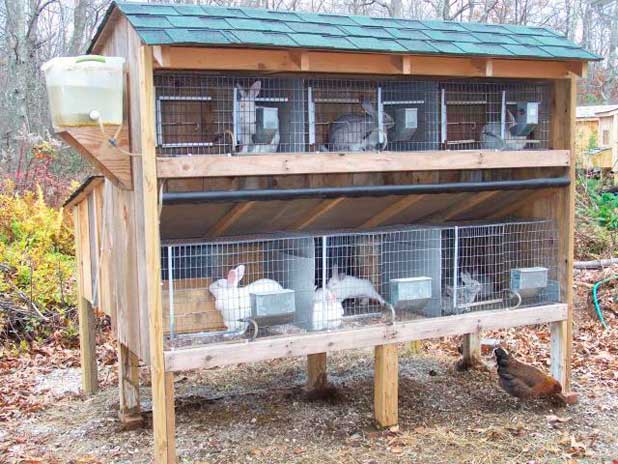
If the cages are to be placed outdoors, stick to these rules:
- Home rabbits do not like direct sunlight. Therefore, their houses should be located in the shade of trees or protected by an artificial hedge that will scatter the rays of the sun.
- The humidity of the ambient air should be no more than 60-70%. Set up cages in an elevated, dry area, away from bodies of water.
- Drafts are often the cause of rabbit diseases. Animals should not be exposed to air currents exceeding 30 m / s.
- The cages must be well ventilated... Vapors from rabbit secretions should not harm their health.
- It is highly desirable to install houses for rabbits facing east.
For the winter season, the cages should be insulated, the temperature inside should vary from +10 to +20 ° C. Especially carefully insulate the nesting compartment for the queens and their offspring.
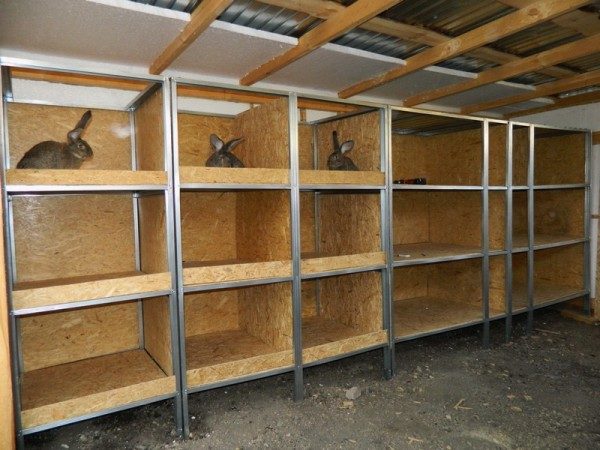
- in winter, the room should be illuminated for no more than 10 hours;
- walls must be plastered;
- sufficiently ventilate;
- the best option if the south side of the room will be equipped with a window on the entire wall.
- cages can be made at a height of 80-100 cm from the floor, so rabbits will be protected from rat and mouse bites, and it will be easier for you to care for pets.
Condition 2. Design and dimensions of the cage
The cages must be of a certain size and design.
Dimensions of the rabbitry
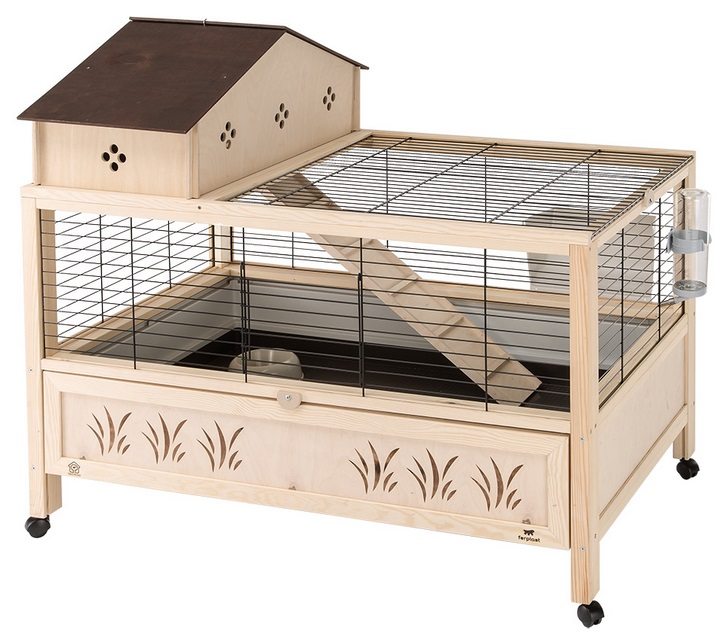
The size of the cells depends on:
- from the breed of rabbits;
- their maintenance schemes ("battery" cells, mini-farm, industrial economy, etc.);
- standard values: young animals need 0.12 m² of area, males - 0.17 m², and females - 0.5 m².
Common Rabbit Cage Sizes:
- for rabbits - 50 × 70 × 30 cm;
- for adults - 50 × 100 × 30 cm.
Most often, houses are made in two cells. In such paired rabbitries, the nesting compartments are adjacent to the outer walls of the cages. They are communicated with the aft areas by passageways (manholes) measuring 17 × 17 cm.
Features of the rabbit house
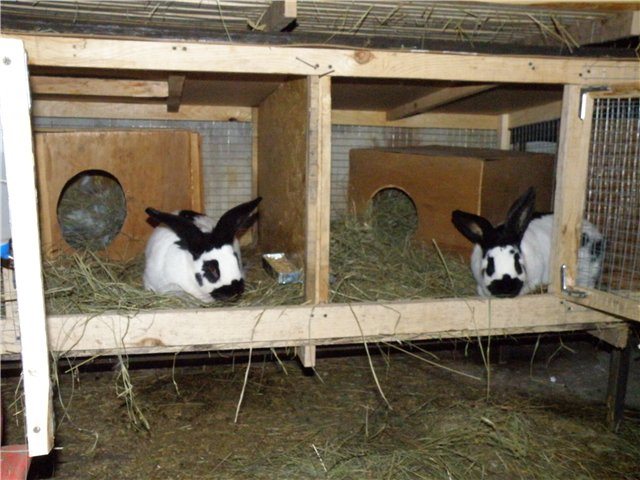
On the front side of the rabbitry, doors are placed: two mesh doors in the ranges and two deaf doors in the nests. Drinking bowls and nurseries are placed between them. Feeders are attached to the front of the mesh doors.
The entire area of the cage for keeping rabbits is divided into a walking section and a nesting area (deaf zakut). The size of the walking area can be different, but most often it is 50 cm in width and length.
The zakut, beloved by animals, is a box 25 cm wide and 50 cm long. The rabbits sleep in it, and also hide in bad weather or when they feel danger.
The zakut is sheathed tightly and only a removable door is hung from its front side. Laz is made in the wall, which is adjacent to the walking area.
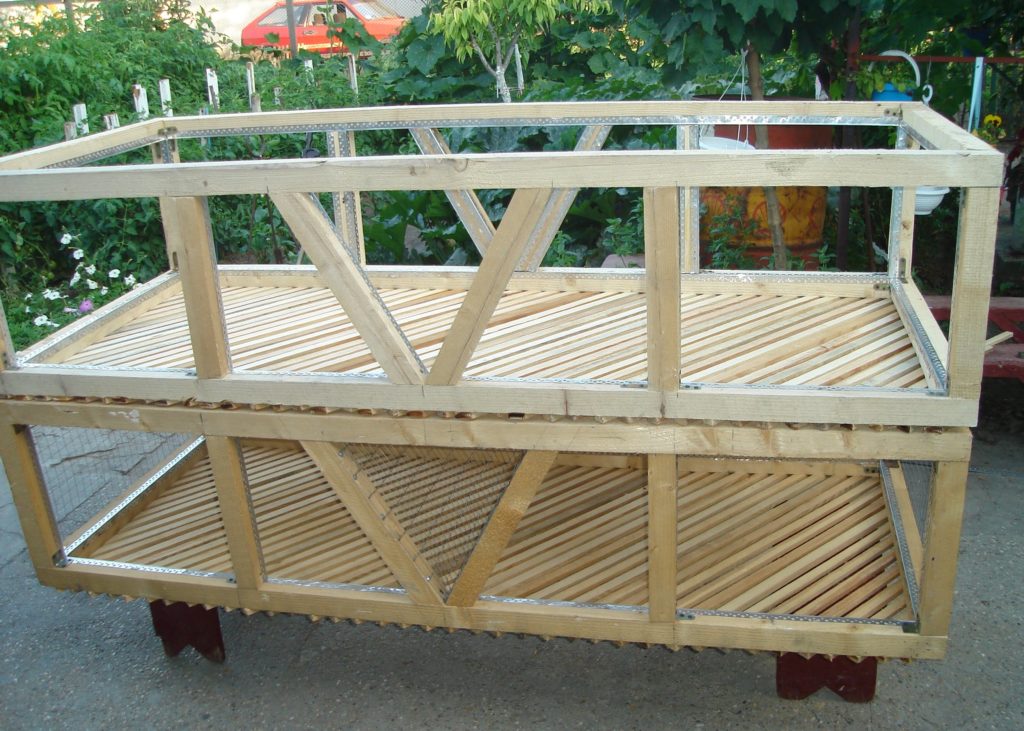
Rabbit cages are made with a slatted or mesh floor. This is necessary so that their waste can freely fall into the pallet located under the floor.
The height of the front side of the house should be 50-55 cm, and the rear wall should be 30 cm high. In other words, the roof of the cage should have a slope. With a tiered arrangement of rabbitries, it will simultaneously play the role of a tray for the upper cages. Therefore, the roof must be sheathed with galvanized sheet iron.
What materials to use?
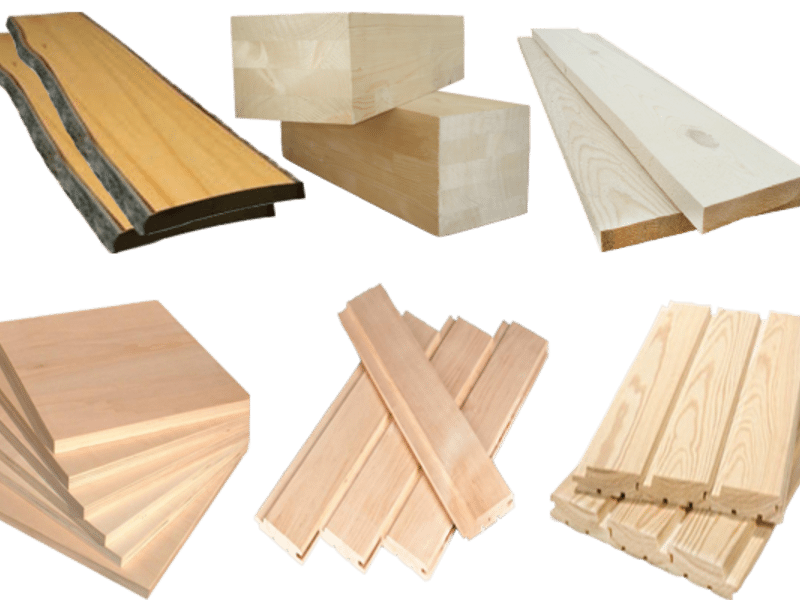
The best option for building cells- use environmentally friendly wood and products of its processing.
- A wooden beam is well suited for the construction of a frame.
- The walls can be sheathed with plywood or boards. Particleboard is unsuitable for this, this board absorbs moisture, swells from it and begins to crumble.
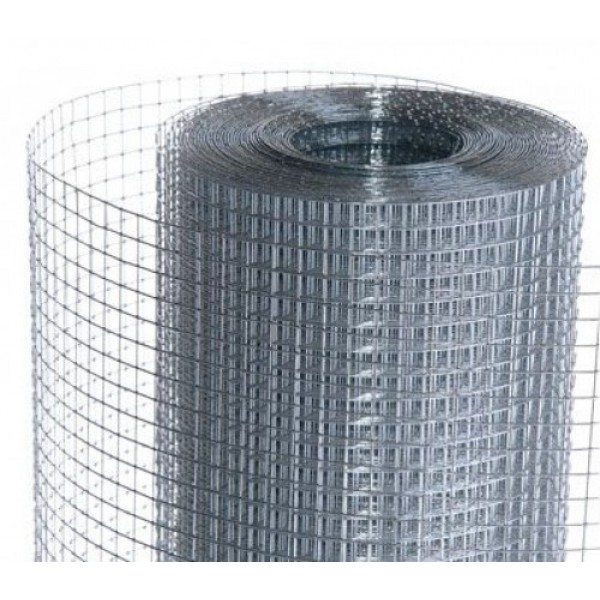
- For the arrangement of the floors, use a welded mesh with a mesh size of 1.5 × 1.5 cm.
- For flooring, you can also use wooden or plastic slats 2-3 cm wide. Stuff them with a step of 1.5 cm between each other. So the waste from the rabbits will fall freely into the sump.
- The step should not be more than the given figure. Otherwise, the legs of the animals will get stuck in the cracks, and they can break them.
When making a house for a rabbit with your own hands, remember one important condition. The materials for its construction must be smooth, without burrs, splinters and other inclusions that can cause injury.
Stages of making a cage
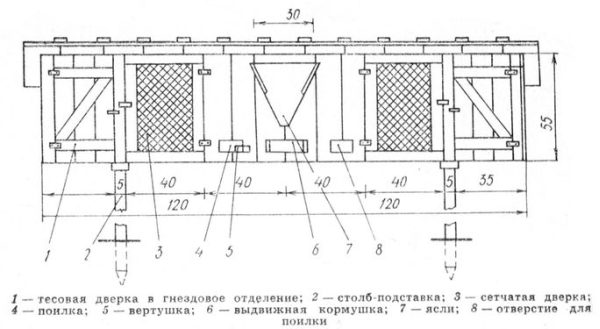
I will describe to you how the simplest cage for the closed keeping of rabbits is made. According to this scheme, you can also build a house for open air, but then you will have to apply OSB.
The design of the cage should be shown in the drawing. Draw it, focusing on the dimensions of a single rabbitry: length 150 cm, width 70 cm and height 70 cm.
But it is better if the rabbit cage is a steam room, so you will save building materials. Then the wireframe should look like this:
- length - 300 cm;
- width - 70 cm;
- height in front of 120 cm, and behind - 100 cm.
Tools and materials
Before making a rabbit cage, prepare the materials:
- two sheets of plywood, 150 × 150 cm in size and 1 cm thick;
- 10 wooden blocks, 3 m long and 3 × 5 cm in size;
- 3 m² of galvanized iron mesh, with cells of 1.5 × 1.5 cm;
- 1 kg of self-tapping screws, 3 and 7 cm long.
And, of course, you also need the appropriate toolkit.
Putting together a rabbit house
| Image | Instructions |
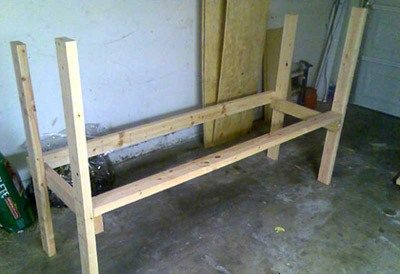 | Step 1. Construction of the frame Assemble the frame on a firm, level surface. Dimensions of the base of the house: length 3 m, width 0.7 m, height in front 1.2 m, back 1 m. The frame must have legs. Screw the mesh onto the floors of the structure with your own hands. You can fix it without reaching the edges of the structure, there will be mother cells. Their floor should be solid. |
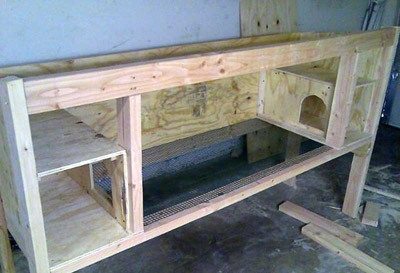 | Step 2. Work on queen cells. First, make the back wall out of plywood: cut it to fit the frame and screw it to the timber with the screws.
|
 | Step 3. Construction of the feeder. Fix the bar vertically in the center of the structure. Screw 2 feeders to it. They should be 30 cm wide and 7 cm high. Screw two guide bars in 20 cm increments over the feeding area. |
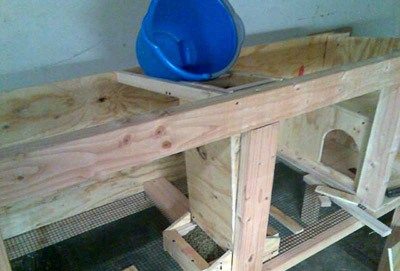 | Step 4. Feed frame. It is made from plywood. This is a device, the upper part of which is inserted between the guide bars, the lower part is placed in the feeder. |
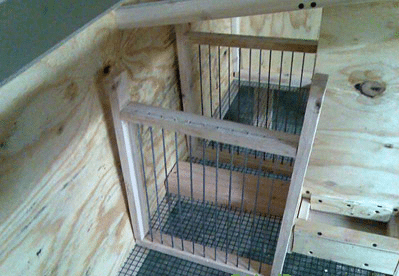 | Step 5. Additional feeder. Place another one near the main feeder - under the hay. Make it out of iron wire. |
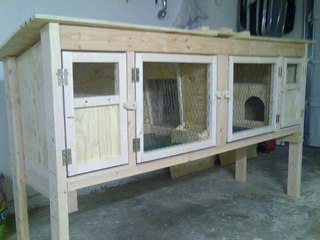 | Step 6. Installing the roof and doors. Cover the free area of the rabbit cage with plywood. Put on the roof. She should have an overlap of 5 cm in front, 10 cm on the sides and back. Leave a hole in the center of the house. Through it you will put food. Install mesh doors 50 × 30 cm last. |
Conclusion
Rabbit cages are easy to make yourself. The main condition is that they must be spacious and built from environmentally friendly materials. The video in this article will clearly demonstrate all the stages of cage installation. If you have any questions, ask them in the comments.
